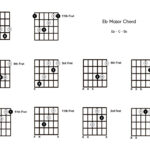The Epiphone Masterbilt series has long been admired for offering exceptional value in the world of acoustic guitars. Many guitar players wonder how these instruments stack up against their Gibson counterparts, especially considering Epiphone’s historical connection to Gibson. Let’s delve into a comparison to understand the position of Epiphone Masterbilt acoustic guitars in today’s market.
Historically, Epiphone Masterbilt guitars have held a special place, with models like the AJ500-M being particularly praised for their “Gibson-sounding” qualities. These vintage Masterbilts are now appreciating in value, reflecting their esteemed reputation. However, the current Masterbilt lineup seems to be charting a slightly different course. Rather than directly mimicking Gibson acoustics, today’s Masterbilts appear designed to compete with other solid wood guitars in the mid-price range, such as Seagull, Fender, and Alvarez.
If your goal is to find a guitar that closely echoes the iconic sound and feel of a Gibson J-45 or J-200, while remaining budget-conscious, brands like Eastman and Blueridge deserve serious consideration. These manufacturers have carved a niche by creating instruments that faithfully capture the essence of classic Gibson designs. Personal experiences often highlight the comparable quality of Eastman and Blueridge guitars to even higher-end models. In terms of craftsmanship, materials, and tonal richness, many players find Eastman and Blueridge to be on par with, or exceeding, guitars like the Gibson J-15. The consistency and build quality of Eastman and Blueridge are often likened to the highly regarded Japanese-made Epiphone Elite series of the past.
Stepping up from the $500 price point of the Epiphone Masterbilt range to the $700-$800 range, where many Eastman and Blueridge all-solid wood models reside, can significantly enhance your guitar quality. For players needing to stay around the $500 mark, the Masterbilt line remains a compelling option. However, it’s important to adjust expectations; even the most Gibson-esque Masterbilt model, like the EJ-45ME, doesn’t truly replicate the sound or feel of a genuine Gibson J-45. While it shares some dimensional similarities and aesthetic cues, the sonic character is distinct.
Ultimately, if you discover an Epiphone Masterbilt acoustic guitar that resonates with you, it’s undoubtedly a solid choice, offering excellent value and pleasing sound. However, if your primary aim is to capture the authentic Gibson acoustic experience on a tighter budget, exploring Eastman and Blueridge guitars will likely prove more fruitful in achieving that sought-after tone and vibe.

